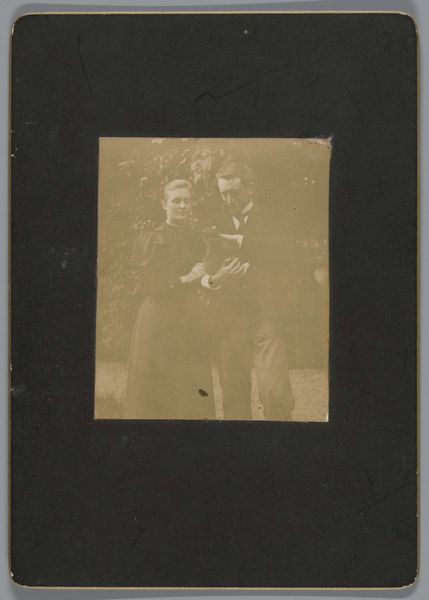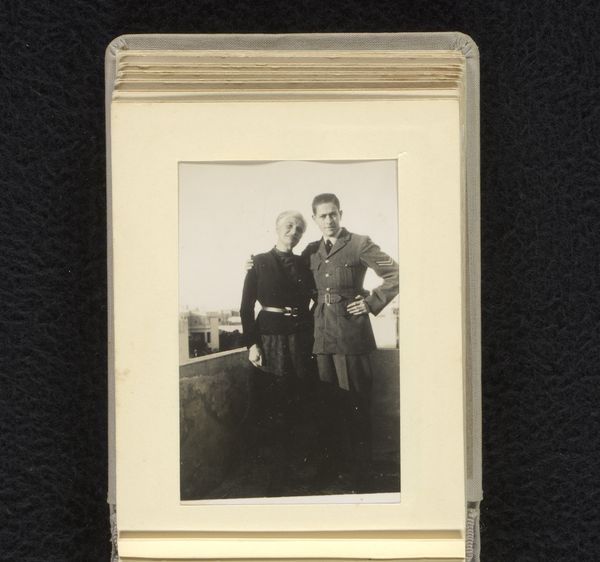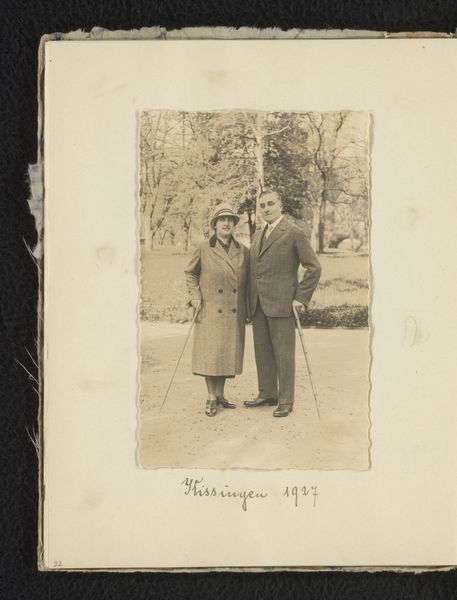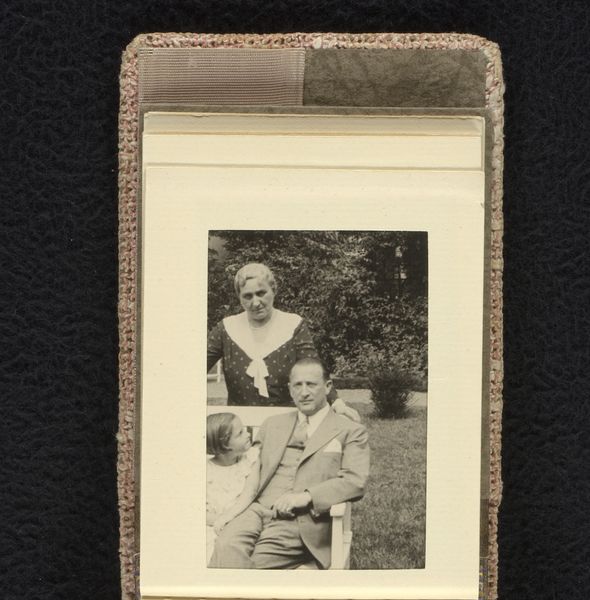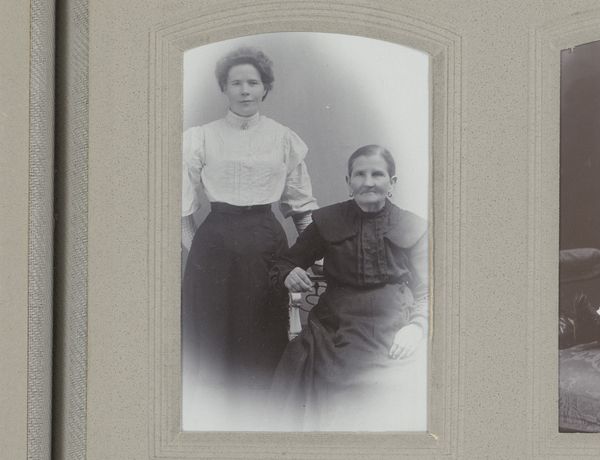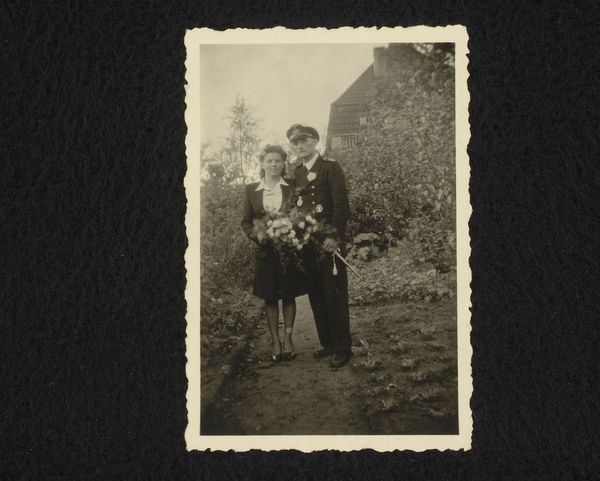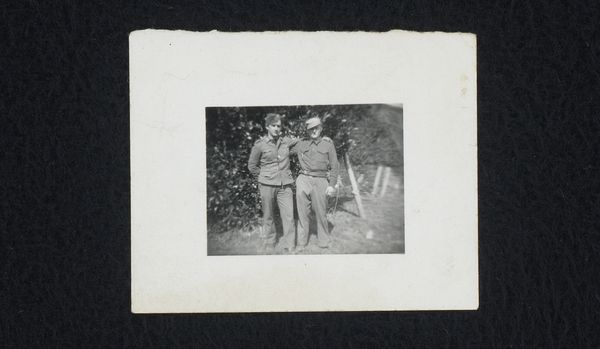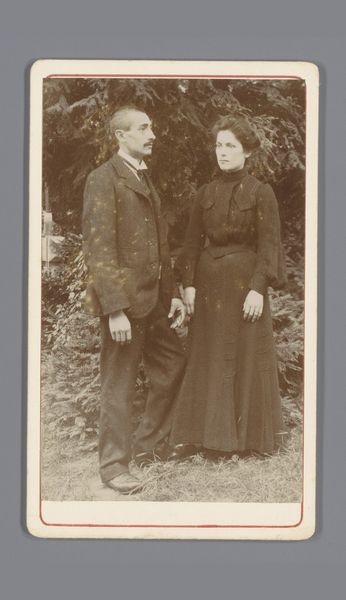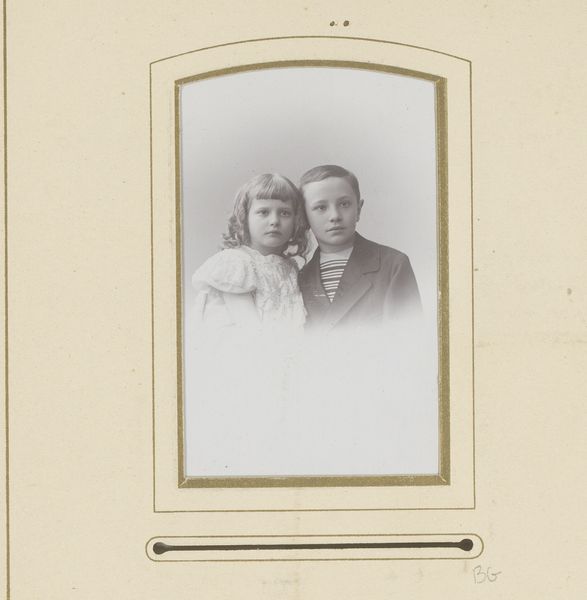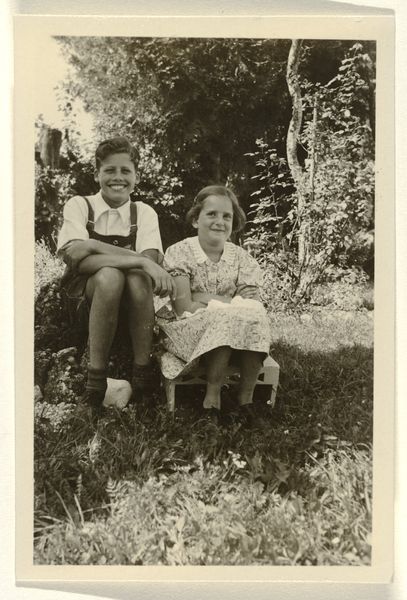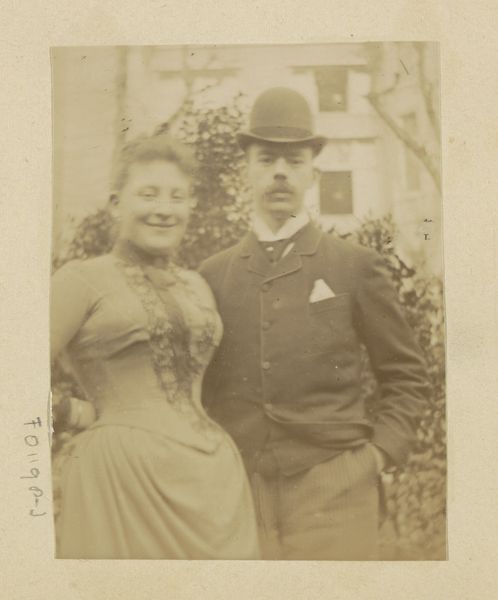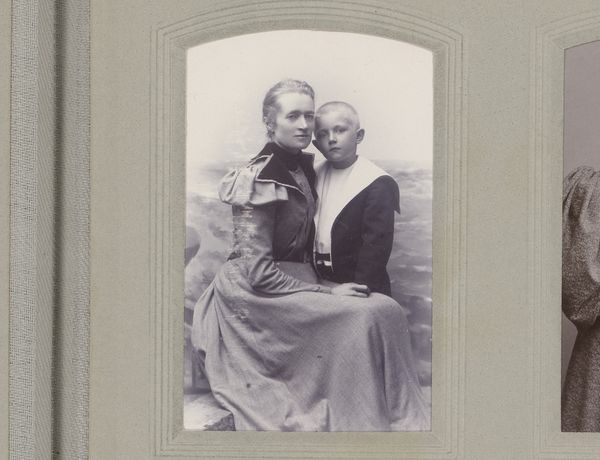
Dimensions: height 65 mm, width 58 mm, height 138 mm, width 98 mm
Copyright: Rijks Museum: Open Domain
Editor: So here we have "Jan Hofker en vrouw," a photograph dating from around 1860 to 1915, by Willem Witsen, currently held in the Rijksmuseum. It has this gentle, old-timey feel, almost like peering into a forgotten album. What’s your initial reaction to it? Curator: My eye is drawn to the composition—how they’re framed, almost swallowed, by that stark black mount. It's a portrait, but it also speaks volumes about the act of preservation, or perhaps the decay of memory, given the damage to the card. Do you see that tension between what's present and what's fading away? Editor: Yes, definitely. It does feel like a fragment. But beyond that, I'm wondering about the subjects themselves. What can we glean about their lives? Curator: Ah, now that’s the poet in you talking! Consider their pose: they stand close but aren't touching. Formal attire suggests a certain social standing, perhaps aspirations to elegance. Yet, there’s something…unresolved. They’re gazing in different directions, almost as if inhabiting separate worlds. Editor: That’s a really interesting point. So, are you saying the image tells more than just a literal representation of these people? Curator: Precisely. It’s a fragment of their story, filtered through Witsen’s lens – a mix of Romanticism, perhaps, with a touch of quiet observation. I feel a certain distance, a gentle sadness even. What lingers with you after seeing it? Editor: I’m struck by the thought that even the most seemingly straightforward portrait can be layered with such unspoken narratives and feelings. It really invites a closer, more empathetic look. Curator: Indeed. And it’s a reminder that the story an artwork tells isn’t always written in plain sight, but rather in the spaces between what is visible and the questions we dare to ask. A simple photograph becomes a portal to another world.
Comments
No comments
Be the first to comment and join the conversation on the ultimate creative platform.
